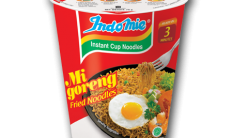WTO accession may not be cure for garment industry
Viet Nam News, Vietnam
by Phuong Hoa
Viet Nam is close to wrapping up negotiations with other countries for World Trade Organisation (WTO) membership. Once completed, full membership will only be a matter of time. What does that presage for the country’s textile industry?
Opinion is divided. Some say membership in the trade organisation will open the doors to many markets around the world. But others warn an export boom is not a given but will depend purely on the competitiveness of the nation’s textile industry.
What are the issues at stake here? For the last 30 years the Multi-Fibre Agreement determined global textile exports. There were quotas for all exporting countries. But it was scrapped last year and countries became free to export as much as the market would stand. However, this privilege is extended only to WTO members.
But there has since been a backlash – the EU and US have both put up barriers against Chinese exports which threatened to overwhelm both their domestic industries and other countries’ exports (more about that later).
What this has done is again give countries like Viet Nam and others – which could not take China head-on – a chance. The share of the global pie out of China’s reach has expanded and is becoming bigger.
Cause for hope
Some international experts believe that once Viet Nam enters the WTO, its garments exporters too will replicate China’s success.
Chris Helzer, a senior executive in the region for sports goods giant Nike, says WTO membership will make Viet Nam very competitive in the garments industry.
“It’s only that [it will] be a bit behind some of its competitors in [getting] access to the world markets.”
Viet Nam’s main markets are the US and EU. Following the abolition of the quota system, China grabbed the share of most other countries in those giant markets.
While other exporting countries struggled to make a mark, China’s export growth was so extreme that both the EU and US, worried for their domestic industries, negotiated to reimpose restrictions on its garment exports late in 2005.
Viet Nam, a non-member of the WTO and still subject to quotas, recorded a 2 per cent growth in export to the US last year.
More surprisingly, though it had reached an agreement with the EU to lift quotas, exports dropped marginally. China’s grew by 50 per cent.
But one factor in favour of Viet Nam is that though half its exports go to the US, its share of US imports is a mere 3 – 4 per cent.
“The Vietnamese industry is not a threat to US textile and garment makers,” Le Quoc An, Chairman of the Viet Nam Textile and Apparel Association (Vitas), says.
“Despite our growth of 10 per cent last year, our market share [of the US market] just inched up to 3.6 per cent.”
Besides, Viet Nam mostly ships garments to the US while the domestic industry there is focused primarily on textile production.
In contrast, Chinese exports accounted for 25 per cent of the US market share with textiles making up 40 per cent of them.
Sceptics
An is one of those not convinced about Viet Nam’s prospects. “Even after Viet Nam becomes a full member of the World Trade Organisation, its textile and garment industry might fail to take off,” he says.
A foreign expert, Angela Hale, explains that in the post-quota era not all exporters will benefit, only highly competitive countries.
Industry insiders in Viet Nam agree the country remains very far behind China in terms of competitiveness.
One of the major reasons for is that support industries are not developing at the same pace as the textile industry itself.
Consider these numbers. For its textile industry, Viet Nam imports 100 per cent of machinery and components, 100 per cent of chemical fibres, 67 per cent of textile fibres, 90 per cent of natural cotton and 70 per cent of cloth of all kinds.
Most manufacturers are small – or medium-sized, up to 80 per cent of them employ fewer than 300 workers, and 90 per cent have capital below VND5 billion (US$312,500).
Besides, the industry is plagued by poor infrastructure, shortage of experienced managers and skills to assess foreign markets, low labour productivity, and costly services.
For instance, transport costs in Viet Nam are 50 per cent higher than in neighbouring nations.
Last Friday, the electricity industry decided to raise prices further though they were already among the highest in the region.
But the biggest stumbling block is that Vietnamese companies have to grapple with cumbersome procedures and red tape, especially at the Ministry of Trade, customs, and taxation department, Vitas’ An says.
“There has been some reform but it is too little and too slow in comparison with our competitors.”
Survival
Besides fundamental requirements like capital, management skills and marketing nous, what Viet Nam needs is to eliminate red tape and simplify procedures so that companies, despite being big, can also be quick on their feet.
The government realises this and is trying to equitise all State-owned textile-garment companies. It is expected that by 2014 there will be no SOEs in the industry.
In the past few years the fortunes of almost all equitised enterprises have looked up. From 15 per cent for apparel makers and 5 per cent for textile manufacturers before equitisation, average profit growth at these companies has gone up to 20 per cent.
To achieve economies of scale, many companies have merged or set up alliances and some of them are working well.
At a seminar held recently, the industry ministry discussed mobilising external investments, loans from the Development Assistance Fund, and idle money with people to raise $3 billion for the industry during the 2014-10 period.
Most of it – $2.46 billion – will be earmarked for production of raw materials, accessories, and chemicals.
With the Chinese juggernaut stopped for the moment in its tracks, Viet Nam can achieve 10 per cent growth in exports to both the US and EU. But An points out this advantage is temporary. “It is not clear if Viet Nam can sustain this growth after 2014. It depends absolutely on the efforts put in by enterprises and State offices.”
He says 2014-07 is absolutely crucial. Without positive changes in 2014-07, Viet Nam will lose out like it did during the first nine months last year when China was hogging the global market. — VNS





